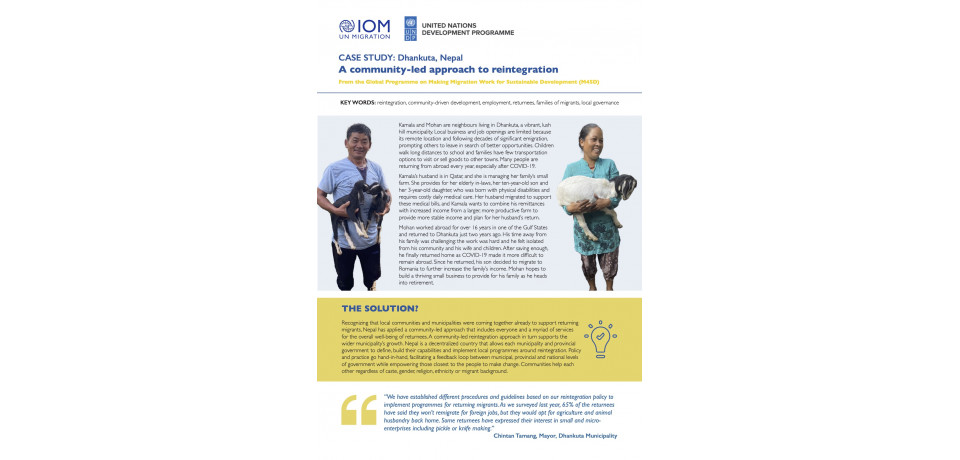CASE STUDY: A Community-Led Approach to Reintegration in Nepal
Related Sustainable Development Goals and Global Compact for Migration Objectives
This case study tells the story of Kamala and Mohan, two people living in Dhankuta, Nepal whose lives have been affected by migration and who want to open small businesses. Mohan has just returned after years living and working abroad, and Kamala's husband is still working in another country. How do the local government and community organizations create an environment in which they can thrive and provide for their families? Who benefits and how does local reintegration support generate success for the wider local community? How would another community set up something similar?
Kamala and Mohan's neighbours experience very similar challenges. Many Nepalis migrate abroad or to bigger cities every year for better employment opportunities, with many returning to Nepal and trying to thrive in their home country. However, an IOM study found that 83% of returnee migrants who returned due to COVID-19 were unemployed upon return but seeking employment.
In order to address this challenge, the IOM-UNDP Global Joint Programme Making Migration Work for Sustainable Development (M4SD) supports national and local authorities, the private sector and the diaspora through a community-led approach to create new (self)-employment opportunities for returnee migrants, which in turn supports their sustainable reintegration.
Read the new case study to find out how. In particular, the case study gives 5 tips that we learned from putting this approach into practice. These tips range from ensuring inclusive selection criteria that leaves no one behind to putting reintegration, employment and development policies into practice at the national and local levels. Practitioners can learn how to strengthen similar programmes and how to ensure returning migrants are fully supported so that their skills and ideas help their communities develop and thrive.
This case study is also available in Nepali.
